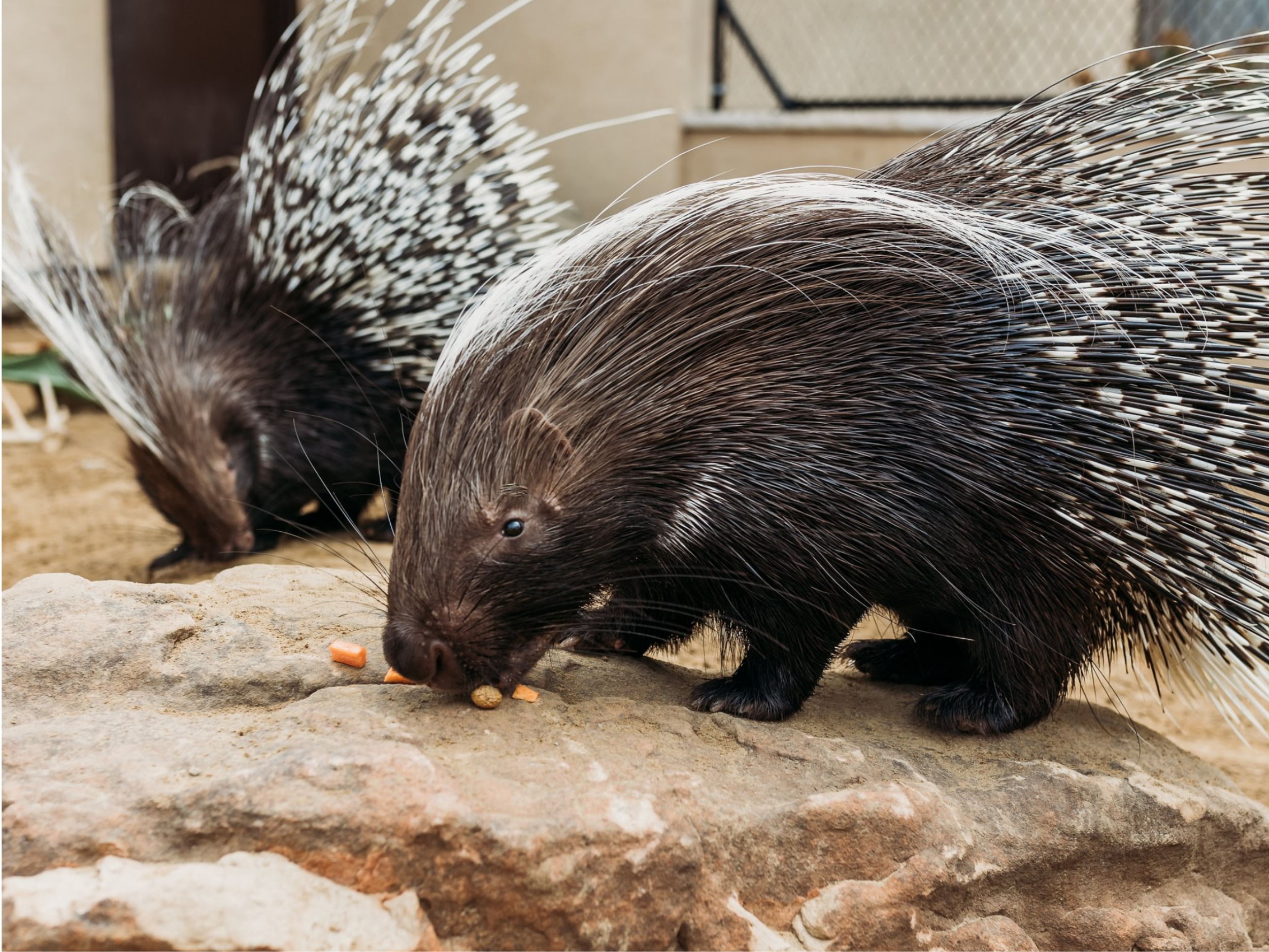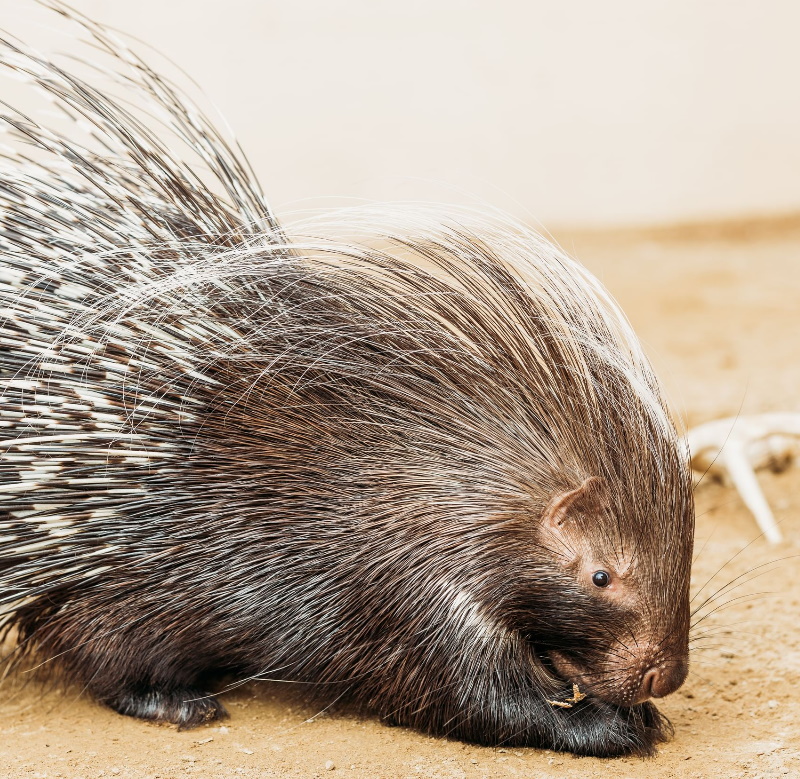African Crested Porcupine
Contrary to popular myth, porcupines do not shoot their quills!
Day of Creation: six
Biblical Kind: Old World porcupine (includes all Old World porcupine species)
Status: least concern
Length: 2–3.5 feet
Weight: 20–70 pounds
Habitat: hilly, rocky habitats in sub-Saharan Africa, North Africa, and Italy
Lifespan: 15–20 years
Diet: bark, bulbs, fruit, roots, and tubers
Family Life: live in small family groups called “prickles”
Reproduction: 1–4 porcupettes are born after 4-month gestations
Fun Facts
“Porcupine” roughly translates as “quill pig,” from the Latin porcus meaning “pig” and spina, meaning “quill/spine.”
Porcupines are rodents, so they must constantly gnaw on objects to wear down their ever-growing incisors. In fact, the word “rodent” is derived from the Latin rodere, which means “to gnaw.”
African crested porcupines give plenty of warning before “quilling” a potential threat. First, they flare up their quills to make their bodies appear larger. Next, they stomp their feet and rattle their tail quills. Lastly, they will turn around and ram into the predators backward. The quills stick into the skin of the predators and then detach, and the porcupines can run away.
These animals are quite vocal and produce a variety of clicks, chuffs, growls, grunts, snorts, and whines. They also use body language to communicate, including jumping, rattling, spinning, and stomping.
Old World porcupines are not in the same created kind as New World porcupines. They have a lot of physical and behavioral differences. While Old World porcupines are often social and terrestrial, New World porcupines are often solitary and arboreal (tree-dwelling). Old World porcupines have thicker quills arranged in a long “skirt” around their abdomens, while New World porcupines have thinner quills that cover their entire bodies. Most importantly, Old World porcupine quills are smooth, whereas New World porcupine quills are covered in barbs. If you or a pet are ever quilled by a New World porcupine, don’t pull the quills out—go to a medical professional.


